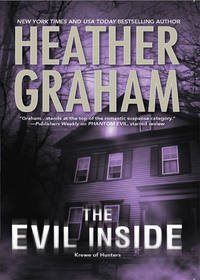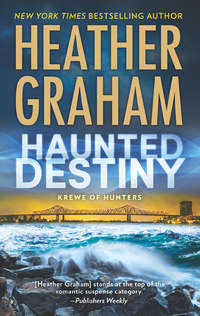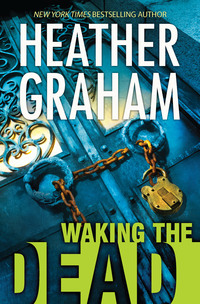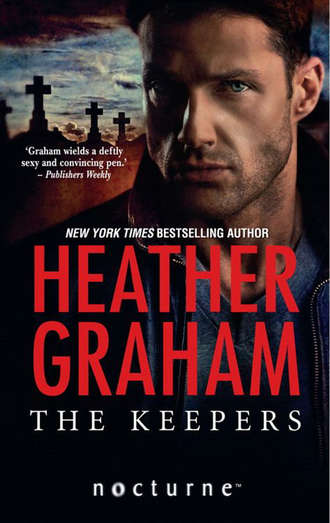
Полная версия
The Keepers

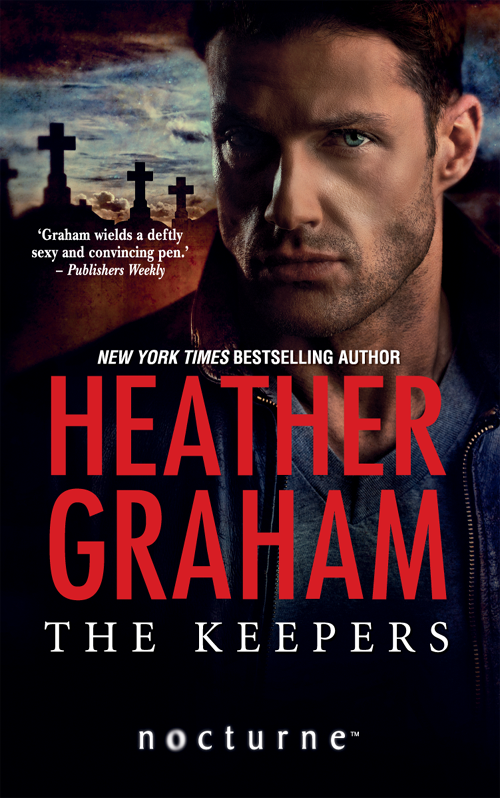
Praise for New York Times Bestselling Author Heather Graham
“Graham plays the story’s supernatural angle for both chills and chuckles … Ringo is the best ghost to come along in ages.”
—RT Book Reviews on Nightwalker
“Romantic flourishes enhance this bewitching blend of Native American lore, ghostly shenanigans and modern-day chicanery.”
—Publishers Weekly on Nightwalker
“Mystery, sex, paranormal events. What’s not to love?”
—Kirkus Reviews on The Death Dealer
“Graham peoples her novel with genuine, endearing characters”
—Publishers Weekly on The Séance
“Graham’s latest is an entertaining vampire yarn.”
—Publishers Weekly on Blood Red
“The intense, unexpected conclusion will leave readers well satisfied.”
—Publishers Weekly on The Dead Room
“Even though this ghostly thriller is not a romance … [Graham] introduce[s] delicious romantic interludes. She also brings a fresh perspective to New York’s mysterious underground city.”
—Booklist on The Dead Room
About the Author
New York Times bestselling author HEATHER GRAHAM has written more than a hundred novels, many of which have been featured by the Doubleday Book Club and the Literary Guild. An avid scuba diver, ballroom dancer and mother of five, she still enjoys her south Florida home, but loves to travel as well, from locations such as Cairo, Egypt, to her own backyard, the Florida Keys. Reading, however, is the pastime she still loves best, and she is a member of many writing groups. She’s currently vice president of the Horror Writers’ Association, and she’s also an active member of International Thriller Writers. She is very proud to be a Killerette in the Killer Thriller Band, along with many fellow novelists she greatly admires. For more information, check out her website, theoriginalheathergraham.com.
Dear Reader,
First, thank you for reading this! There’s nothing in the world to me like the pleasure of telling a story—unless it’s getting to do so with friends.
Alex Sokoloff is the author of the second book in this series. I met Alex when we were both called to be in the Thriller Killer Band—and it felt immediately as if I had known her all my life. We share a love of adventures, in the water, on land—and in our great cities. Every year I do a Labor Day benefit in New Orleans, and Alex has been there, helping, teaching screenwriting and giving her all.
Deborah LeBlanc is another amazing women. She’s from Louisiana, and has done brilliant things for me and on her own to support reading, our youth—and New Orleans. Deb is president of Horror Writers of America, teaches a boot camp called Pen to Press and has attended many an autopsy!
For the three of us to come together—as we were able to do several times, luckily, in the planning of this series—and work on a project has been sheer joy. And, of course, since we all love New Orleans so much, when we began to think of a world where paranormal beings might just blend in … well, New Orleans popped right into all our heads. Seriously—where else would you hide in plain sight if you were a bit different from others?
My admiration for these two wonderful authors is absolute, and I hope you’ll enjoy our combined venture, that you’ll enjoy The Keepers—our three sisters charged with keeping the balance in the underworld.
Please look for their books in the months to come!
Best,
Heather Graham
THE KEEPERS
HEATHER GRAHAM

To Connie Perry, my extremely dear friend and cohort in many an endeavor. Thank you for all you do—and especially for New Orleans!
Also, for Daena Moller and Larry Montz and the ISPR. Thank you for some great adventures, too!
Prologue
When the world as we know it was created, it wasn’t quite actually as we know it.
That’s because so much was lost in the mists of time, and the collective memory of the human race often chooses what it will hold and what it will discard.
But once the world held no skyscrapers, rockets did not go to the moon—in fact, the wheel had barely been invented, and families lived together and depended upon one another. The denizens of the world knew better the beauty of waterfalls, of hills and vales, sun and sunset, shadows—and magic.
In a time when the earth was young, giants roamed, gnomes grumbled about in the forests and many a creature—malignant, sadly, as well as benign—was known to exist. Human beings might not have liked these creatures, they might have feared them—for a predator is a predator—but they knew of their existence, and as man has always learned to deal with predators, so he did then. Conversely, there were the creatures he loved, cherished as friends and often turned to when alliances needed to be formed. Humankind learned to exist by guidelines and rules, and thus the world went on, day after day, and man survived. Now, all men were not good, nor were all men bad, and so it was also with the giants, leprechauns, dwarfs, ghosts, pixies, pookas, vampires and other such beings.
Man was above them all, by his nature, and he prospered through centuries and then millennia, and learned to send rockets to the moon—and use rockets of another kind against his fellow man.
When the earth was young, and there were those creatures considered to be of light and goodness, and others who were considered to be, shall we say, more destructive, there was among them a certain form of being who was human and yet not human. Or perhaps human, but with special powers. They were the Keepers, and it was their lot in life not only to enjoy the world as other beings did, but they were also charged with the duty of maintaining balance. When certain creatures got out of hand, the Keepers were to bring them back under control. Some, in various centuries, thought of them as witches or wiccans. But in certain centuries that was not a healthy identity to maintain. Besides, they were not exactly the witches of a Papal Bull or evil in the way the devil in Dante’s Inferno, nor were they the gentle women of pagan times who learned to heal with herbs and a gentle touch.
They were themselves and themselves alone. The Keepers.
As time went by, anything that was not purely logical was no longer accepted, was relegated to superstition, except in distant, fog-shrouded hills or the realm of Celtic imagination, which was filled with Celtic spirits other than those of which we speak. But some of the beliefs of the past were not accepted even there. Man himself is, of course, a predator, but man learned to live by rules and logic, or destroy all the creatures upon which he might prey. Too late for some, for man did hunt certain creatures to extinction, and he sought to drive others to the same fate. But those other creatures learned a survival technique that served them well: hide. Hide in plain sight, if you will, but hide.
As human populations grew, as people learned to read, as electricity reigned, and the telephone and computer put the world in touch, the earth became entrenched in a place where there were things that were accepted and others that were not. Oh, it’s true that the older generations in Ireland knew that the banshees still wailed at night. In Hungary and the Baltic states, men and women knew that the tales of wolfmen in the forests were more than stories for a scary night. And there were other such pockets of belief around the globe. But few men living in the logical and technological world believed in myths and legends, which was good, because man was ever fond of destroying that which he feared.
All creatures, great and small, wish to survive. We all know what humans are like—far too quick to hunt down, kill or make war on those they didn’t fully understand. Many people are trying, as they have tried for centuries, to see the light, to put away their prejudices. But that’s a long journey, longer than the world has lasted so far.
Even so, those who were not quite human found various special places of strange tolerance to live their lives quietly and normally, without anyone paying them too much attention. Places where everyone was accustomed to the bizarre and, frankly, walked right by it most of the time.
Places like New Orleans, Louisiana.
Since there were plenty of people already living there who thought they were, or claimed to be, vampires, it seemed an eminently logical place for a well-behaved and politically correct vampire society to thrive, as well.
As a result, that is where several Keepers, charged with maintaining the balance between the otherworldly, under-the-radar societies of beings who flocked there, came as the twenty-first century rolled along.
And thus it was that the MacDonald sisters lived there, working, partying—this was New Orleans, after all—and, of course, keeping the balance of justice in a world that seldom collided with the world most people thought of as real, as the only world.
Seldom.
But not never.
There were exceptions.
Such as the September morning when Detective Jagger DeFarge got the call to come to the cemetery.
And there, stretched out on top of a tomb in the long defunct Grigsby family mausoleum, was the woman in white. Porcelain and beautiful, if it hadn’t been for the delicate silk and gauze fabric that spread around her, she might have been a piece of funerary art, a statue, frozen in marble.
Because she, too, was white, as white as her dress, as white as the marble, because every last drop of blood had been drained from her body.
Chapter 1
“Sweet Jesus!” Detective Tony Miro said, crossing himself as he stared at the corpse.
The cemetery itself had already been closed off, yellow crime tape surrounding the area around the mausoleum. Jagger DeFarge had been assigned as lead detective on the case, and he knew he should have been complimented, but in reality he just felt weary—and deeply concerned.
Beyond the concern one felt over any victim of murder or violent crime.
This was far worse. This threatened a rising body count to come.
Gus Parissi, a young uniformed cop, stuck his head inside the mausoleum. The light was muted, streaks of sunlight that filtered in through the ironwork filigree at the top end of the little house within the “city of the dead.”
Gus stared at the dead woman.
“Sweet Jesus,” he echoed, and also crossed himself.
Jagger winced, looking away for a moment, waiting. He wanted to be alone with the victim, but he had a partner. Being alone wasn’t going to be easy.
“Thank you, Parissi,” Jagger said. “The crime-scene crew can have the place in ten minutes. Hey, Miro, go on out and see who’s on the job today, will you?”
Miro was still just staring.
“And get another interview with Tom Cooley, too. He’s the guide who saw her and called it in, right?” Jagger asked.
“Uh—yeah, yeah,” Tony said, closing his mouth at last, turning and following Gus out.
Alone at last, my poor, poor dear, Jagger thought.
The dust of the ages seemed to have settled within the burial chamber, on the floor, on the stone and concrete walls, on the plaques that identified the dead within the vault. In contrast, the young woman on the tomb was somehow especially beautiful and pristine, a vision in white, like an angel. Sighing, Jagger walked over to the body. To all appearances, she was sleeping like a heavenly being in her pure perfection.
He pulled out his pocket flashlight to look for the bite marks that had to exist. He gently and carefully moved her hair, but there were no marks on her neck. He searched her thighs, then her arms, his eyes quick but thorough.
At last he found what he sought. He doubted that the medical examiner—even with the most up-to-date technology available—would ever find the tiny pinpricks located in the crease at her elbow.
He swore out loud just as Tony returned.
His partner was a young cop. A good cop, and not a squeamish one. Most of the crimes taking place these days had to do with a sudden flare of temper and, as always, drugs. Tony had worked a homicide with him just outside the Quarter in which a kid the size of a pro linebacker had taken a shotgun blast in the face. Tony had been calm and professional throughout the grisly first inspection, then handled the player’s mother with gentle care.
Today, however, he seemed freaked.
“What?” Tony asked.
Jagger shook his head. “No blood here at all, no signs of violence. No lividity, but she’s still in rigor…. Is the M.E. here?”
Tony nodded.
“Send him in,” Jagger said. “Have you interviewed the guide yet?”
Tony, staring at the body, shook his head. “One of the uniforms went to find him.”
“He can’t have gone far. Stay out there until they find him and interview him. And anyone who was with him. Then meet me back at the station, and we’ll get her picture out in the media. I want uniforms raking the neighborhood, the dumpsters, you name it, looking for a purse, clothing, anything they can find.”
Tony nodded and left.
The M.E. the Coroner’s Office had sent out that morning was Craig Dewey. Dewey looked like anything but the general conception of what a medical examiner should: he was tall, blond, about thirty-five. Basically, until they found out what he did for a living, most women considered him a heartthrob.
Like the others, he paused in the door. But Dewey didn’t stand there stunned and frozen as Tony and Gus had done. He did stare, but Jagger could see that his keen blue eyes were taking in the scene, top to bottom, before he approached the corpse. Finally that stare focused on the victim. He looked at her for a long while, then turned to Jagger.
“Well, here’s one for the books,” he said, his tone matter-of-fact. “On initial inspection, without even touching her, I’d say she’s been entirely drained of blood.” He looked around. “And it wasn’t done here.”
“No. I’d say not,” Jagger agreed with what appeared to be obvious.
“Such a pity, and so strange. Murder is never beautiful, and yet … she is beautiful,” Dewey commented.
“Dewey, give me something that isn’t in plain sight,” Jagger said.
Dewey went to work. He was efficient and methodical. He had his camera out, the flash going as he shot the body from every conceivable angle. Then he approached the woman, checked for liver temperature and shook his head. “She’s still in rigor. Other than the fact that she’s about bloodless, I have no idea what’s going on here. I’ll need to get her into the morgue to figure out how and why she died. I can’t find anything to show how it might have happened. Odd, really odd. A body without blood wouldn’t shock me—we seem to attract wackos to this city all the time—but I can’t find so much as a pinprick to explain what happened. Hell, like I said, I’ve got to get her out of here to check further. Lord knows, enough people around here think they’re vampires.”
“Right, I know,” Jagger said. “When did she die? I was estimating late last night or early this morning.”
“Then you’re right on,” Dewey told him. “She died sometime between midnight and two in the morning, but give me fifteen minutes either side.”
“I want everything you get as quickly as you get it,” Jagger said.
“I have two shooting deaths, a motorcycle accident, a possible vehicular homicide—not to mention that the D.A.’s determined to harass an octogenarian over her husband’s death, even though he’s been suffering from cancer for years—” Dewey broke off, seeing the set expression on Jagger’s face. “Sure, Lafarge. I’ll put a rush on it. This is the kind of thing you’ve got to get a handle on quickly, God knows. We get enough sensationalist media coverage around here. I don’t want to see a frenzy start.”
“Thanks,” Jagger told him.
He looked around the Grigsby family tomb one more time. It was what he didn’t see that he noted. No fingerprints in the dust. No footprints. No sign whatsoever of how the girl had come to lie, bloodless and beautiful, upon the dusty tomb of a long dead patriarch.
He wanted the CSUs, Tony and the uniforms all busy here. He had some investigating to do that he needed to tackle on his own.
He lowered his sunglasses from the top of his head to his eyes and walked back out into the brilliant light of the early fall morning.
The sky was cloudless and brilliantly blue. The air was pleasant, without the dead heat of summer.
It seemed to be a day when the world was vibrant. Positively pulsing with life.
“Hey, Detective DeFarge!”
It was Celia Larson, forty, scrubbed, the no-nonsense head of the crime-scene unit that had been assigned. “Can we go on in? I’ve had my folks working the area, around the entry, around the tomb … but, hey, with the cemeteries around here being such tourist hangouts, folks had been tramping around for an hour before we got the call. We’ve collected every possible sample we could, but we really need to get inside.”
“It’s all yours, Celia. And good luck.”
She leaned into the mausoleum and said accusingly, “You and Dewey have tramped all over the footprints.”
“There were no footprints.”
“There had to be footprints,” she said flatly, as if he was the worst kind of fool.
He shrugged and smiled.
“None, but, hey, you’re the expert. You’ll see what we missed, right?” he asked pleasantly. Celia wasn’t his favorite civil servant with whom to work. She considered every police officer, from beat cop right on up to detective, to be an oaf with nothing better to do than mess up her crime scene. She didn’t seem to understand the concept of teamwork—or that she was the technician, and the detectives used her information to put the pieces together, find the suspect and make the arrest. Celia had seen way too many CSI-type shows and had it in her head that she was going to be the detective who solved every case. Still, he did his best to be level-tempered and professional, if not pleasant. He did have to work with the woman.
“Get me a good picture of the face, Celia. We’ll get her image out to the media.”
She waved a hand dismissively, and he walked on.
This wasn’t going to be an ordinary case. And he wasn’t going to be able to investigate in any of the customary ways.
He made it as far as the sidewalk.
Then he saw real trouble.
He groaned inwardly. Of course she would show up. Of course—despite the fact that he’d only just seen the corpse himself, word had traveled.
She didn’t look like trouble. Oddly enough, she came with a smile that was pure charm, and she was, in fact, stunning. She was tall and slim and lithe, mercurial in her graceful movements.
Her eyes were blue. They could be almost as aqua as the sea, as light as a summer sky, as piercing as midnight.
Naturally she was a blonde. Not that brunettes couldn’t be just as beautiful, just as angelic looking—or just as manipulative.
She had long blond hair. Like her eyes, it seemed to change. It could appear golden in the sun, platinum in moonlight and always as smooth and soft as silk as it curled over her shoulders. She had a fringe of bangs that were both waiflike and the height of fashion.
And naturally she was here.
Sunglasses shaded her eyes, as they did his. The Southern Louisiana sun could be brutal. Most people walked around during the day with shades on.
“Well, hello, Miss MacDonald,” he said, heading for his car. Officers had blocked the entry to the cemetery and the borders of the scene itself with crime-scene tape. But the sidewalk was fair game. The news crews had arrived and staked it out, and the gawkers were lining up, as well.
Before Fiona MacDonald could reply, one of the local network news reporters saw him and charged over, calling, “Detective! Detective DeFarge!” It was Andrea “Andy” Larkin. She was a primped and proper young woman who had recently been transferred from her network’s Ohio affiliate. She was a fish out of water down here.
She was followed by her cameraman, and he was followed by a pack of other reporters. The local cable stations and newspapers were all present. And yes, there came the other network newscasters.
He stopped. Might as well handle the press now, he thought, though the department’s community rep really should be fielding the questions. But if he dodged the reporters, it would just make things worse.
He held his ground, aware that Fiona was watching him from a spot not far from the cemetery wall. He wasn’t going to escape the reporters, and he definitely wasn’t going to escape her.
“Detective DeFarge?” Andy Larkin had apparently assigned herself to be the spokeswoman for the media crew. “We’ve heard a young woman has been found—drained of blood. Who was she? Do you think we have some kind of cultists at work in the area? Was it a ritual sacrifice?”
He lifted a hand as a clamoring of questions arose, one voice indistinguishable from the next.
“Ladies, gentlemen, please! We’ve just begun our investigation into this case. Yes, we have discovered the body of a young woman in a mausoleum, but that’s all that I can really tell you at the moment. We’ll have the preliminary autopsy reports in a day or so, which will answer any questions about the state of the body. We don’t have an identity for the victim, and it’s far too early for me to speculate in any way on whether this is a singular incident or not. However, at this time I have no reason to suspect that we have a cult at work in the city. As soon as I have information, you’ll have information. That’s absolutely all that I am at liberty to say at the moment.”
“But—” Andy Larkin began.
“At any time that I can, without jeopardizing our investigation, I will be happy to see to it that the news media is advised.”
“Wait!” A man from one of the rags spoke up; he was probably in his early twenties, taking the best job available to a young journalism graduate. His hair was long and shaggy, and he was wearing jeans and a T-shirt, and carrying a notepad rather than an electronic device of any kind. “Shouldn’t you be warning the citizens of New Orleans to be careful? Shouldn’t you be giving them a profile of the killer?”
Jagger hoped his sunglasses fully covered his eyes as he inadvertently stared over at Fiona MacDonald.
She had a profile of the killer, he was certain.
“We don’t know anything yet. I repeat—we’ve just begun our investigation. I’m going to give young women in this city the same warning I give all the time: be smart, and be careful. Don’t go walking the streets alone in the dark. Let someone know where you’re going at all times, and if you go out to party, don’t go alone. People, use common sense. That’s my warning.”
“But aren’t serial killers usually young white men between the ages of twenty-five and thirty-five?” shouted a tiny woman from the rear. She was Livy Drew, from a small local cable station.
He reminded himself that he had to stay calm—and courteous. The public affairs department was much better at that, though, and he fervently wished they would hurry up and get there.



